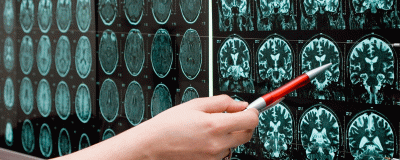About Stroke Care at Rush
Through tireless effort and inspired initiative, Rush has carved out a unique niche in stroke care. For years, Rush clinicians have partnered with community hospitals through our TeleStroke program to treat stroke patients seen in our 10 affiliate emergency rooms.
We’ve augmented that care by creating three new subspeciality stroke clinics in stroke-cardiology, stroke-neurosurgery and stroke prevention. Our multidisciplinary collaboration allows us to tailor our diagnosis and treatment of stroke in a fine-tuned, personalized manner. As a result of this investment in stroke care, Rush can treat the most complex stroke cases and has been recognized as a Comprehensive Stroke Center by the Joint Commission.
We recently added new technology, Vivistim, into our armamentarium of care that can help patients regain more of their upper limb function following an acute stroke.
What is Vivistim?
Implanted in an outpatient setting, Vivistim is a magnetic device that helps to amplify the benefits of physical and occupational therapy for patients who have experienced a stroke via activation of the vagus nerve. It has the potential to improve a patient’s neuroplasticity in their arms and hands.
Roughly 60% of patients who experience a stroke have difficulty with chronic upper limb impairment, as well as difficulty with speech and cognition. Typically, patients’ motor function improvements occur most dramatically during the first three months post-stroke; then, patients may plateau in their recovery around the six-month mark. The incorporation of Vivistim may afford patients the ability to have continued neuroplastic recovery.
How does it work?
Vagus nerve stimulators, such as the Vivistim system, have been used to treat epileptic seizures and depression for over 25 years.
In this case, once post-acute stroke patients are discharged to home with Vivistim, they typically work with an occupational therapist three times a week for six weeks. They perform an everyday task, such as cutting vegetables, while the therapist activates the vagus nerve via the Vivistim system. This begins the process of helping the patients’ brain relearn certain motor tasks.
Following assisted therapy, patients can take ownership of their continued recovery by swiping their hand over the implanted magnet right before doing an activity. By swiping the magnet, Vivistim boosts the signal from the vagus nerve, which, in turn, helps people perform their desired task.
What are the benefits?
Post-stroke patients who have undergone neurostimulator implantation have been able to efficiently relearn certain motor tasks, such as shaking hands, cutting vegetables or driving a car.
Early data suggests that patients experience two to three times greater neuroplasticity when using Vivistim in combination with therapy than with therapy alone.
Who is an ideal candidate for Vivistim?
An ideal candidate for Vivistim is any post-acute stroke patient over 18 years of age who 1) is at least six months post-stroke; 2) still has residual upper limb weakness; and 3) has enough preserved motor function to perform some basic upper extremity movements, such as picking up a tissue off a table.
How to refer a patient
If you’re interested in sending your patient for a consultation, please call (312) 942-4500. Your patient will be formally evaluated by the stroke team for suitability for neurostimulation for upper motor recovery.

